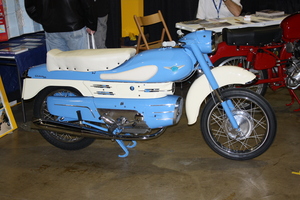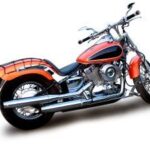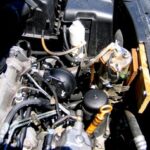Keihin carburetors follow many of the same principles as other carburetors for motorcycles and sustain many of the same problems. Typical issues include malfunctions associated with the fuel/air mixture that the carburetor must balance and produce so the motorcycle engine can run properly. To rebuild the carburetor properly, the job should be completed with gaskets and after all parts have been cleaned. Otherwise, air leaks can occur or channels and carburetor jets can get clogged, all of which can affect the engine performance.
Step 1
Locate the idle adjustment screw cavity on the side of the carburetor. Look for a black pull or twist knob attached to brass needle among the disassembled parts. Insert the handle needle into the side cavity of the carburetor. Twist it into the carburetor body. Tighten the handled screw with a crescent wrench until it stops.
Step 2
Insert the air/fuel mixture needle into the air/fuel mixture screw spring. Take both parts together and screw them into the air/fuel mixture cavity in the carburetor body. Tighten it into the carburetor body with a flat-head screwdriver until it stops. Reverse the screwing direction and back out the needle four to six reverse quarter turns. Adjust the needle position as necessary to fine tune the carburetor once it’s installed and tested on a running engine
Step 3
Locate the idle jet among the parts. Insert it into the center of the fuel float entrance on the bottom of the carburetor where the float filter sits. Twist the idle jet into the carburetor body using a socket wrench to tighten it until the jet stops. Insert the mid-range jet assembly next into the cavity next to the idle jet socket in the carburetor. Twist the mid-range jet into the carburetor body with a flat-head screwdriver until it stops as well.
Step 4
Insert the float needle into the float assembly by hand (the floats look like two plastic bulbs attached by a thin metal tube). Take both parts connected and insert them into the bottom of the carburetor body in the brackets for the float tube. Insert a thin securing pin through the brackets and tube to keep them connected (it works like a door hinge).
Step 5
Insert a new rubber gasket in the float bottom frame of the carburetor. Line up the holes of the bottom cover to the ridges of the carburetor body. Close up the bottom cover against the carburetor body itself, encasing the float assembly and needle. Insert the four securing screws into each corner of the bottom cover. Push the float bottom to the carburetor body to seal it properly. Use a screwdriver to tighten the screws until they stop.
Step 6
Turn the carburetor assembly right-side up. Insert the throttle slide and its top with the throttle cable already hooked into the carburetor body. Slide it in per the carburetor body grooves; do not try to force it. Secure the slide top with two screws tightened down by either a crescent wrench or screwdriver, depending on the securing bolt involved.
Things You’ll Need
~ Crescent wrenches
~ Flathead screwdriver
~ Socket screwdriver
~ Socket wrench and sockets
~ Small hammer
~ New Keihin carburetor gasket kit
~ Phillips screwdriver
Tips and Warnings
Many of the carburetor parts only fit in one location on the carburetor. Do not force the part to fit. If it doesn’t go in right, then you’re using the wrong part in the wrong carburetor body location. Make sure not to have any flammable sources nearby when working on a carburetor, particularly if it is still connected to a fuel line. Gasoline fumes and solvent used for cleaning can both ignite.
Sources:
~ Keihin Carburetor Rebuild CDK2 Series [http://www.shopsbt.com/pdfs/keihincdk2.pdf]
~ Sohc Kei Hin Carburetor Rebuild [http://www.salocal.com/sohc/tech/carb/carbpg2.htm]
~ AA1Car: Honda Keihin Carburetor Repair [http://www.aa1car.com/library/carburetor_honda_keihin.htm]





